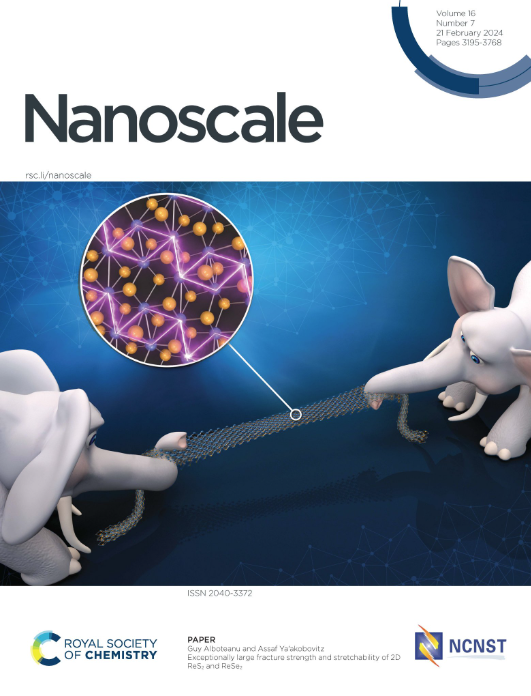晶体取向对外延TiN薄膜氧化的影响
IF 5.8
3区 材料科学
Q1 CHEMISTRY, MULTIDISCIPLINARY
引用次数: 0
摘要
作为一种工业级电极材料,TiN在先进的半导体器件中广泛用作栅极和电容材料。然而,不可避免的氧化作用在TiN薄膜中起着负面作用。本研究采用晶体取向工程技术制备外延TiN薄膜,并对其氧化性能和电导率进行了研究。在高真空条件下,在[001]-、[110]-和[111]取向的SrTiO3衬底上生长外延TiN薄膜。高分辨率x射线衍射和透射电镜证实了外延关系和高生长质量。x射线光发射光谱深度剖面直接反映了外延TiN薄膜的氧化过程。氧化水平依次为TiN(001) <;TiN(110)≈TiN(111)。经Ar+离子刻蚀后的x射线光发射光谱显示氧化产物TiNxOy的存在。通过电流-电压曲线测量,外延TiN薄膜仍然保持了导电性。本研究为利用晶体取向工程技术制备氧化控制外延TiN薄膜提供了有益的参考,并为设计化学稳定的TiN薄膜电极提供了指导。本文章由计算机程序翻译,如有差异,请以英文原文为准。
Effects of Crystal Orientations on Oxidation of Epitaxial TiN Thin Films
As an industrial-grade electrode material, TiN is widely employed as a gate electrode and capacitor material in advanced semiconductor devices. However, the inevitable oxidation plays a negative role in the TiN thin films. In this study, crystallographic orientation engineering was employed to fabricate epitaxial TiN thin films, with an investigation of the oxidation behavior and electrical conductivity. Epitaxial TiN thin films were grown on the [001]-, [110]-, and [111]-oriented SrTiO3 substrates under high vacuum. High-resolution X-ray diffraction and Transmission electron microscopy confirm the epitaxial relationship and high growth quality. The X-ray photoemission spectroscopy depth profiling directly reflects the oxidation of epitaxial TiN thin films. The oxidation level follows the order of TiN(001) < TiN(110) ≈ TiN(111). X-ray photoemission spectroscopy after Ar+ ion etching reveals the presence of TiNxOy as the oxidation product. As measured by the Current-voltage curve, the epitaxial TiN thin films still retain the electrical conductivity. Our work provides a useful reference for preparing oxidation-controlled epitaxial TiN films by crystallographic orientation engineering and guidance for the design of chemically stable TiN thin film electrodes.
求助全文
通过发布文献求助,成功后即可免费获取论文全文。
去求助
来源期刊

Nanoscale
CHEMISTRY, MULTIDISCIPLINARY-NANOSCIENCE & NANOTECHNOLOGY
CiteScore
12.10
自引率
3.00%
发文量
1628
审稿时长
1.6 months
期刊介绍:
Nanoscale is a high-impact international journal, publishing high-quality research across nanoscience and nanotechnology. Nanoscale publishes a full mix of research articles on experimental and theoretical work, including reviews, communications, and full papers.Highly interdisciplinary, this journal appeals to scientists, researchers and professionals interested in nanoscience and nanotechnology, quantum materials and quantum technology, including the areas of physics, chemistry, biology, medicine, materials, energy/environment, information technology, detection science, healthcare and drug discovery, and electronics.
 求助内容:
求助内容: 应助结果提醒方式:
应助结果提醒方式:


